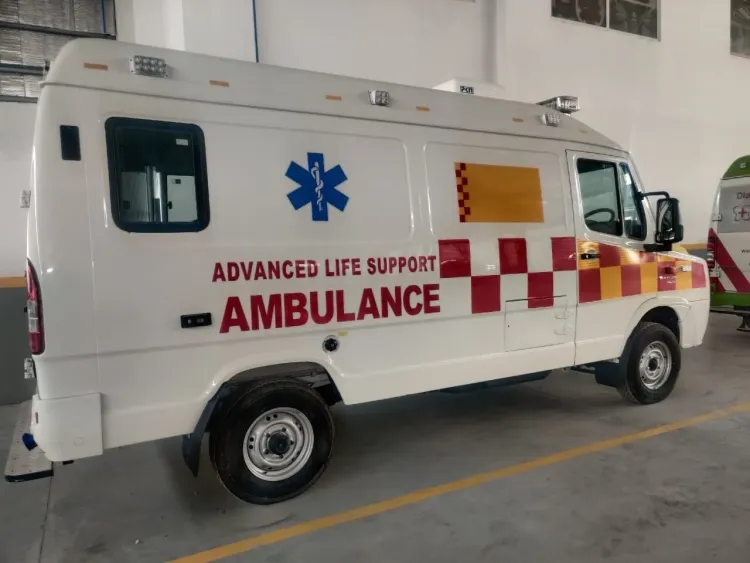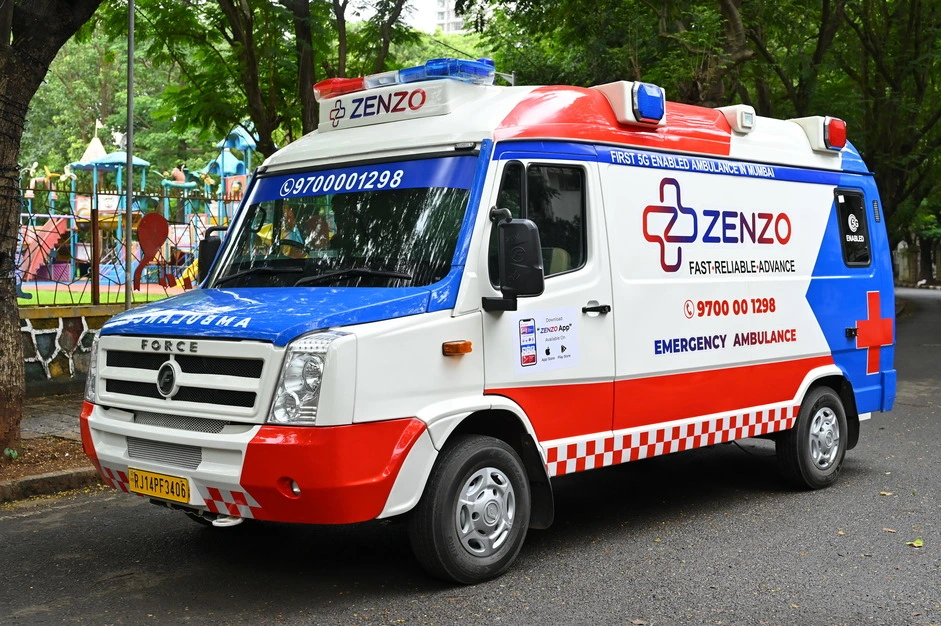Ambulances: Lifesaving Vehicles on Wheels...!!!
Ambulances are specialized vehicles designed to transport patients to and from medical facilities while providing essential medical care during transit. These vehicles are a crucial component of emergency medical services (EMS), serving as lifelines for individuals in urgent need of medical attention.

Historical Development of Ambulances
The concept of ambulances dates back to ancient times when carts and wagons were used to carry the injured. However, the modern ambulance service began to take shape in the late 18th and early 19th centuries.
During the Napoleonic Wars, French military surgeon Baron Dominique-Jean Larrey introduced the idea of "flying ambulances" or "ambulances volantes"—horse-drawn carriages designed to swiftly transport wounded soldiers from the battlefield to medical stations. This innovation significantly improved the survival rates of injured soldiers.
In the 19th century, civilian ambulance services began to emerge in cities like London and New York. These early ambulances were typically horse-drawn and staffed by volunteers or medical personnel. The advent of motorized ambulances in the early 20th century revolutionized emergency medical care, enabling faster and more efficient patient transport.
Types of Ambulances
Ambulances come in various types, each tailored to meet specific medical and logistical needs. Some common types include:
-
Basic Life Support (BLS) Ambulance: Equipped with essential medical tools such as stretchers, oxygen tanks, and basic first-aid supplies, BLS ambulances are staffed by emergency medical technicians (EMTs) and provide non-invasive care.
-
Advanced Life Support (ALS) Ambulance: ALS ambulances are outfitted with advanced medical equipment, including cardiac monitors, defibrillators, intravenous (IV) therapy supplies, and medications. They are staffed by paramedics who can administer advanced medical procedures.
-
Mobile Intensive Care Unit (MICU): MICUs are highly specialized ambulances designed for critically ill or injured patients. They are equipped with advanced life support equipment and staffed by critical care professionals, including paramedics, nurses, and physicians.
-
Neonatal Ambulance: These ambulances are specifically designed to transport newborns and infants requiring specialized medical care. They are equipped with incubators, ventilators, and other neonatal care equipment.
-
Air Ambulance: Air ambulances, including helicopters and fixed-wing aircraft, are used to transport patients over long distances or in situations where ground transportation is not feasible. They are equipped with advanced medical equipment and staffed by specialized medical personnel.
-
Water Ambulance: In areas with significant waterways, water ambulances are used to transport patients. These vessels are equipped with medical supplies and staffed by trained medical personnel.
Functions and Equipment of Ambulances
Ambulances perform several critical functions in emergency medical services:
-
Emergency Response: Ambulances respond to emergency calls, providing rapid on-scene medical care and stabilizing patients before transporting them to medical facilities.
-
Patient Transport: Ambulances transport patients to hospitals, clinics, and other medical facilities for further treatment. They also facilitate inter-facility transfers for patients needing specialized care.
-
Medical Care En Route: Ambulances are equipped with medical supplies and equipment to provide essential medical care during transit. This includes administering medications, performing CPR, managing airways, and monitoring vital signs.

Common equipment found in ambulances includes:
-
Stretchers and Immobilization Devices: For safe patient transport and injury immobilization.
-
Oxygen Tanks and Respiratory Equipment: To provide supplemental oxygen and support respiratory function.
-
Cardiac Monitors and Defibrillators: To monitor heart activity and deliver electrical shocks to treat cardiac arrest.
-
Intravenous (IV) Therapy Supplies: For administering fluids and medications directly into the bloodstream.
-
First-Aid Kits and Trauma Supplies: Including bandages, splints, dressings, and other essential materials.
-
Communication Equipment: Radios and mobile devices for communication with dispatch centers, medical facilities, and other emergency services.
Significance of Ambulances
Ambulances are vital to the healthcare system, providing timely medical care in emergencies. Key aspects of their significance include:
-
Rapid Response: Ambulances provide swift responses to medical emergencies, ensuring patients receive immediate care and transport to medical facilities. This rapid intervention can be life-saving, especially in cases of cardiac arrest, severe trauma, and other critical conditions.
-
Continuity of Care: Ambulances ensure continuity of care by providing medical treatment during transport. This is crucial for stabilizing patients and preventing further deterioration.
-
Accessibility: Ambulances make healthcare more accessible, especially in remote and underserved areas. They bridge the gap between patients and medical facilities, ensuring individuals receive the care they need.
-
Disaster Response: Ambulances play a critical role in disaster response and mass casualty incidents. They are essential for evacuating and treating victims, coordinating with other emergency services, and providing medical support in disaster-affected areas.
-
Public Health and Safety: Ambulances contribute to public health and safety by providing emergency medical services, reducing mortality and morbidity rates, and enhancing community resilience.
Ambulances are indispensable vehicles that provide essential medical care and transport in emergencies. Their ability to respond quickly, offer medical treatment during transit, and transport patients to medical facilities makes them a cornerstone of emergency medical services. Whether on land, in the air, or on water, ambulances play a critical role in saving lives and ensuring the health and well-being of individuals and communities.
What's Your Reaction?

















